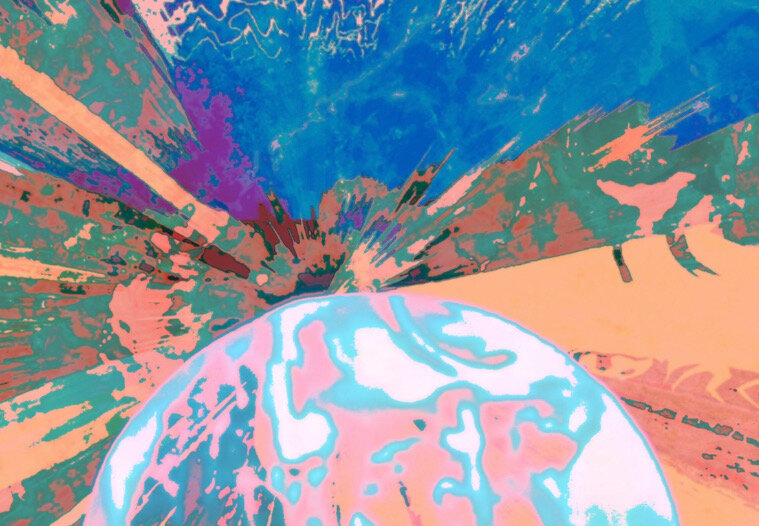paula crown in conversation
with executive director peter doroshenko
What has been the focus of your recent studio work and why?
Recently my studio practice continues to be about finding the space to gain my bearings, as we are all trying to find our bearings in this isolating time. I am thankful to be an artist right now more than ever because I can work out ideas, uncertainty, and anxiety through my work and studio practice. Similarly to my painting Mourning in America (2016) when I didn’t have the words after the presidential election. My recent works continue to be iterative. During the For Freedoms Congress in Los Angeles at the end of February, I had the chance to visit the Japanese American National Museum and I was drawn to a sculpture of Buddha effaced and melted by the atomic bomb. I continue to work with this image in my studio. On one hand, it is heart-wrenching and represents the shadowy echo of the bomb. And yet, it is also phoenix-like, representing hope and understanding of how we can do better. This work is an example of when the fabric of society was torn by larger forces than us, and how unnecessary that was. That is very much in parallel to how I am feeling right now - the social fabric has been ripped - how do we heal it again as we face these new challenges? I am reminded to be focused, present, and aware as our lives are intertwined in every way.
Many new works have a rigorous post-conceptual look and feel, is this tied into your current thoughts and interests?
My work is always about the best way to get ideas across. To be able to create a larger dialogue about what is important. I draw attention to things in order to ask “the why.”
Charles Sanders Peirce, the 19th-century American philosopher, theorized that human communication and cognition are based on the use of signs—specifically the index, icon, and symbol. The index, in Peirce’s semiotic framework, is thought physically manifested. The index leaves a physical trace. These marks continue to be ever-present in my practice. Even though we have a virtual connection in time, our connection to nature and to our senses is very important and all interwoven.
How much do ecological issues influence your thinking and studio work?
Over time, the planet has become a log of our collective marks, forming many of our ecological issues today. The marks we make on the world are thus diverse yet important in all facets.
As an artist, I think there is potential in everything. It is much less about a throwaway culture, it is about the beauty that is in front of is. Sacred ground is beneath our feet. Having more time now than ever to absorb and observe my natural surroundings, I can experience it woven into our daily fabric.
Solo Together as a series strives to bring awareness to what we do, the gestures we make, and what the consequences are for our overall well being. We each hold responsibility, now more than ever. With the current state of the world, we are back in an accountable role. From the center to the sublime, we live in our own heads and bodies and yet we are part of this larger story.
In moments, this has been a blessing of a reset, how often do we have this time to stop and reexamine everything that we are doing, every mark and gesture we are making? Collectively we are finding our bearings, questioning how we affect the world. We are presented with an open moment to ask us to take a closer look and be curious.
What have you been reading and how does that reflect on your current thinking?
I am currently reading Carlo Rovelli’s Reality Is Not What It Seems about Quantum Gravity. The text poses the idea that there is really no such thing as time. I find this interesting from a macro point of view and how we have a lot of conventions like time to abide by and how this helps us seek our bearings in this world or not.
I am also reading The Aura in the Age of Digital Materiality - Rethinking Preservation in the Shadow of an Uncertain Future, edited by my dear friend and collaborator Adam Lowe @factumarte, which questions what happens when you make a facsimile and does the original aura replicate? The topic is very interesting to me as it challenges what is real, what is original, and where the mark lies. The topic relates back to my recent interest in the Buddha statue I saw at the Japanese American National Museum. Is the original aura of that statue gone or has it become more expansive? In my recreating the image over and over again, does this method build upon the aura or negate it?
I also recently returned to poetry, specifically Mary Oliver’s Wild Geese - this idea that everything fits, though we may not like it. We are perfect the way we are. The challenges are gifts to make things better. Every day we reorganize to work towards chaos, work towards order from the disorder, and to be curious in the process.








